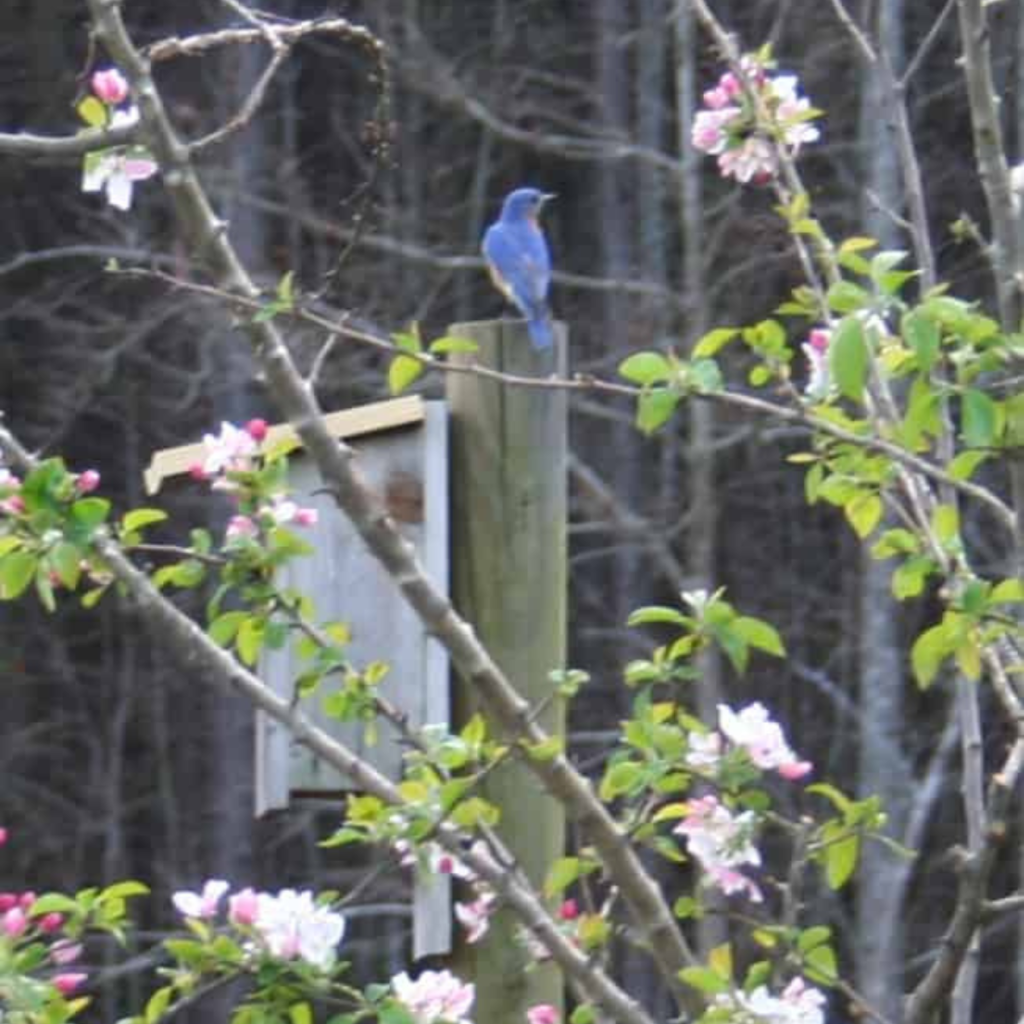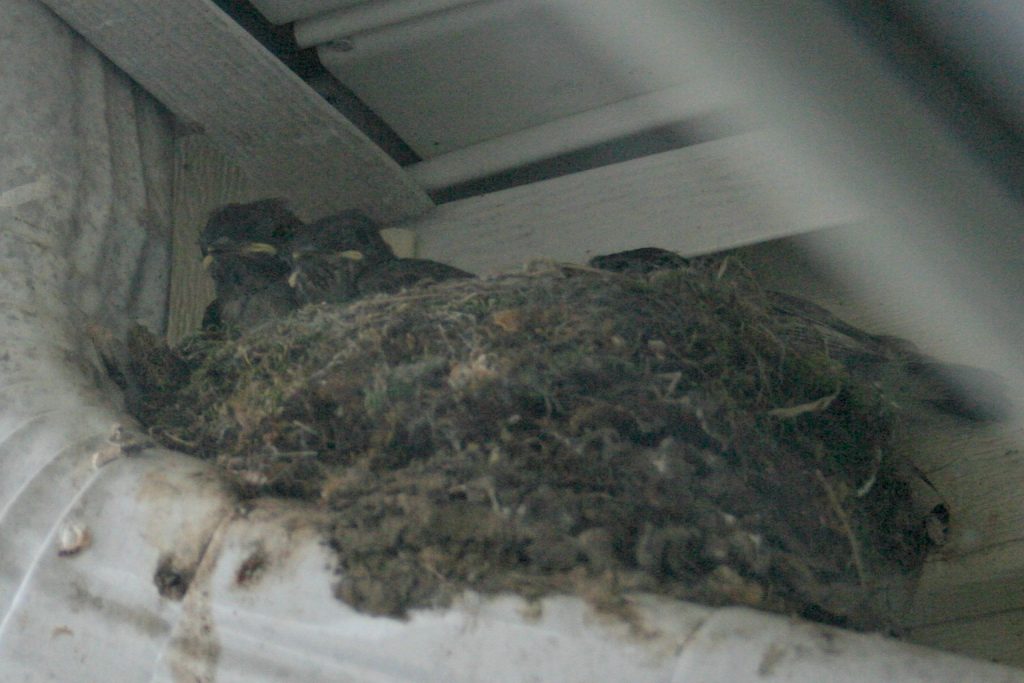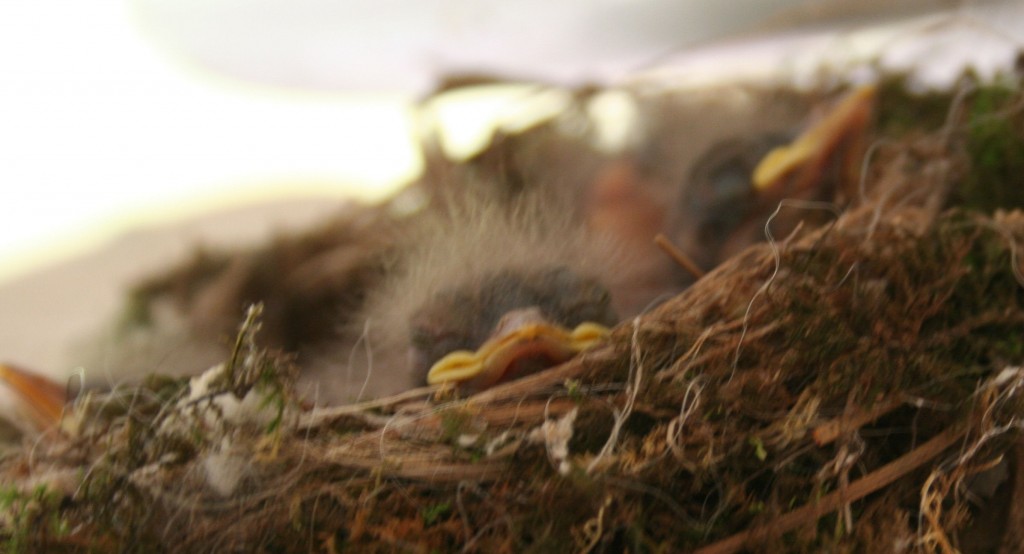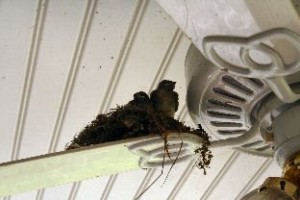Should birdhouses be cleaned out? Yes, say the experts. Learn more.
Our Annual Chore – Cleaning the Birdhouses
Each fall, my husband cleans out the birdhouses around the farm. He takes the cordless drill with him to unscrew the tops of all the bluebird houses. Then he opens up the top and gently removes the nesting materials left there by each family who inhabited the bluebird house during the past year.
Most of the time, he finds empty nests. The nests are built up high – higher than the books say they should be. Most of the books tell you that bluebirds build their nests near the bottom of the nesting boxes, but our bluebirds always build them up so that they enter and are almost at eye level with their babies. It probably makes it easier to feed them, but it also makes it easier for predators, such as the cats, to find them.



Why Some Eggs Don’t Hatch
This weekend, we found two nests with eggs still in them. It made me sad to think about the babies who didn’t make it, and I’m not sure why the parents abandoned the nests. The photo above shows unhatched eggs; these were found many months after nesting season when we cleaned the birdhouse.
I looked online today for an answer as to why the eggs might have been abandoned. One article said that the nest will be abandoned if something happens to the mother bluebird, as Dad can’t hatch the eggs alone.
You Should Clean Birdhouses to Prevent Disease
Should birdhouses be cleaned out each year? Yes, to prevent disease.
Dirty birdhouses can harbor mites, bacteria, and fungi. It’s essential to clean out backyard birdhouses at least once a year. The experts say to clean birdhouses after the last clutch of eggs has fledged. Still, I never know precisely when my birds are finished with their nests, and I don’t want to disturb them while they’re still in parenting mode. We wait until the fall before cleaning out the nest boxes.
How to Clean Birdhouses
To clean birdhouses, follow these steps:
- Open up the birdhouse. We use the cordless drill to unscrew the house’s top or side. Some birdhouses have hinged lids, which make cleaning very easy!
- Wear garden gloves to protect your hands. Reach in and lift out the old nesting materials. We carry a bucket around the yard and place the nests inside the bucket.
- Scrape out any feces or dirt. An old paint scraper works wonders.
- If you can remove the birdhouse entirely, wash it with a weak solution of one bleach to nine parts water. Rinse with clean water until all traces of the bleach solution are gone, then leave it open and in the sun to dry out.
- Inspect the birdhouse and fix any warped boards, cracks, or loose perches before replacing it or replacing the cover.
The bleach solution will kill microorganisms lurking in the birdhouse and keep it nice and clean for subsequent broods.
Inspect the Area
We also look around the house, especially under the eaves, for other nests that can come down during snow and ice storms and clog the gutters. Here are two Eastern phoebes nests we’ve had over the years – one built under the house’s eaves, on top of a rain gutter, and the other built on the ceiling fan in our front porch. We had to duct tape the ceiling fan blades to the porch roof so that it stopped spinning around while the eggs were in the nest. I always wondered what those babies thought about their spinning cradle!








Thanks so much in participating in the Homestead Blog Hop #3! Hope to see you there next week! 🙂
Thank you – I look forward to it!
When I was a kid I would go to my grandma’s farm and help her out. My favorite part of the whole farm were the birdhouses! I really like what was said about the cleaning of the birdhouse. There was one time when I was tasked to clean a birdhouse on the farm, and I found an abandoned bird egg. I would have never known if I hadn’t of checked!